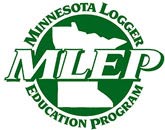Evergreens are supposed to stay green- forever! Browning can affect all types of evergreens and it can happen from a variety of different reasons:
Natural Shedding
Old needles will turn brown or yellow and drop off of your tree every couple of years. It all depends on your type of evergreen tree.
Sun
The winter’s sun is harsh on trees. Your evergreen can easily have sunscald from the blaring rays. The sun warms up the tissue which activates it, and when the sun goes down the foliage is harmed. Dehydration is also common with sunscald. The tree cannot resynthesize when temperatures follow below 20 degrees Fahrenheit.
This tends to happen on the windward, south, southwest side of the tree.
Dehydration
The evergreen tree relies on the water in its needles once the ground freezes its roots.
Frost Heaving
Frost heaving can harm the roots too. The process of thawing and freezing displaces the roots upwards to the point where the roots can be sticking out of the ground. This makes your tree extremely vulnerable. Putting mulch around the base of the tree is a great way to prevent frost heave.
Disease
Here is a list of all common disease and pests an evergreen tree can get in Minnesota.
The most common needle disease, often seen in Colorado blue spruces and white spruces. The Norway spruce is pretty resistant to this.
Colorado bruce spruce and white spruce are more likely to get this disease. Needles on the bottom of the tree will show discoloration first.
This is a fungus that commonly affects Colorado blue spruce, white spruce, and black spruce. Needles at the tip of the branch will discolor.
Eastern spruce Dwarf Mistletoe
Common in black and white spruce trees, but can affect other pines, larches, firs, and spruces. It is a parasitic plant that lives within the canopy of the tree.
This pathogen is commonly seen on Colorado blue spruce trees but all spruce trees can be at risk. The older the tree, the more chance it has of being infected.
A fungus that affects Colorado, Larch, and Norway spruce trees.
This can affect a variety of trees from evergreens, deciduous, and shrubs. Thick, black, fungal strings on the base of the tree is a huge indicator that the tree is affected by this particular type of root rot.
What To Do
Mulch and watering are the best ways to protect your tree from the harsh winter months. Anti-desiccants or antitranspirant sprays are commonly recommended, but the U of M says they are ineffective. We always recommend calling a local certified arborist to inspect your tree if you have any doubts about its’ health.











